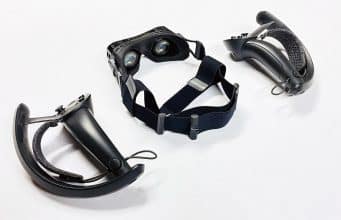Bigscreen Beyond is the most interesting and promising new dedicated PC VR headset to come out in years, and while there’s a lot to like, we’re still waiting on a key piece that will make or break the headset.
Bigscreen Beyond has one goal in mind: make the smallest possible headset with the highest possible image quality.
Generally speaking, this unlikely headset (born from a VR software startup, after all) has ‘pulled it off.’ It’s an incredibly compact VR headset with built-in SteamVR tracking. It feels like a polished, high-end product with a look and feel that’s all its own. The visuals are great, though not without a few compromises. And it delivers something that no other headset to date has: a completely custom facepad that’s specially made for each customer.
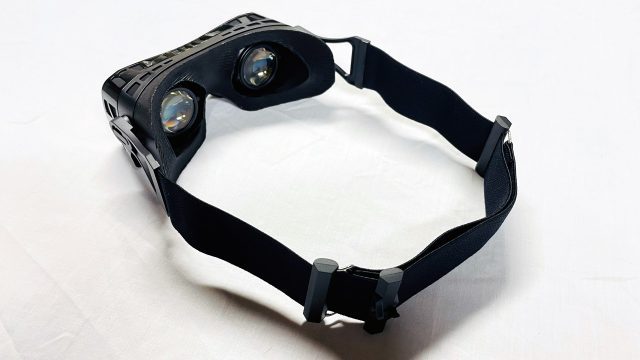 I’ll dig more into the visual details soon, but first I need to point out that Bigscreen Beyond missing something important: built-in audio.
I’ll dig more into the visual details soon, but first I need to point out that Bigscreen Beyond missing something important: built-in audio.
While there’s an official deluxe audio strap on the way, as of right now the only way to use Bigscreen Beyond is with your own headphones. In my case that means a pair of wireless gaming headphones connected to my PC. And it also means another thing to put on my head.
For some headsets this would be a notable but not deal-breaking inconvenience, for Bigscreen Beyond, however, it’s amplified because the headset’s custom-fit facepad means absolutely zero light leakage. It wasn’t until I started using Beyond that I realize just how often I use the nose-gap in the bottom of most headsets to get a quick glimpse into the real world, whether that’s to grab controllers, make sure I didn’t miss an important notification on my phone, or even pick up a pair of headphones.
With no nose-gap and no passthrough camera, you are 100% blind to the real world when you put on Beyond. Then you need to feel around to find your headphones. Then you need to feel around for your controllers.
Oops, something messed up on your PC and you need to restart SteamVR? Sure, you can lift the headset to your forehead to deal with it in a pinch, but then you put it back down and realize you got some oil on the lenses from your hair or forehead. So now you need to wipe the lenses… ok, let me put down the controllers, take off the headphones, take off the headset, wipe the lenses, then put on the headset, feel around for my headphones, then feel around for my controllers. Now I want to fix my headstrap… oops the headphones are in the way. Let me take those off for a minute…
All of this and more was the most frustrating part of an otherwise quite good experience when using Beyond. And sure, I could use wireless earbuds or even external speakers. But both have downsides that don’t exist with a built-in audio solution.
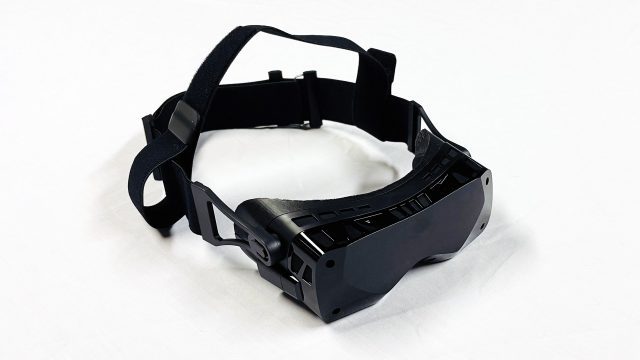
A lack of built-in audio on a VR headset just feels like a huge step back in 2023. It’s a pain in the ass. Full stop.
Until we have the upcoming deluxe audio strap to pair with Beyond, it feels incomplete. We’re patiently waiting to get our hands on the strap—as it will really make-or-break the headset—and plan to update our review when that time comes. Bigscreen says it expects the deluxe audio start to be available sometime in Q4.
Bigscreen Beyond Review
With the audio situation in the back of our minds, we can certainty talk about the rest of the headset. Before we dive in, here’s a look at the tech specs for some context:
Bigscreen Beyond Specs |
|
| Resolution | 2,560 × 2,560 (6.5MP) per-eye microOLED (2x, RGB stripe) |
| Pixels Per-degree (claimed) | 32 |
| Refresh Rate | 75Hz, 90Hz |
| Lenses | Tri-element pancake |
| Field-of-view (claimed) | 102° diagonal |
| Optical Adjustments | IPD (fixed, customized per headset) eye-relief (fixed, customized per facepad) |
| IPD Adjustment Range | 53–74mm (fixed, single IPD value per device) |
| Connectors | DisplayPort 1.4, USB 3.0 (2x) |
| Accessory Ports | USB 2.0 (USB-C connector) (1x) |
| Cable Length | 5m |
| Tracking | SteamVR Tracking 1.0 or 2.0 (external beacons) |
| On-board Cameras | None |
| Input | SteamVR Tracking controllers |
| On-board Audio | None |
| Optional Audio | Audio Strap accessory, USB-C audio output |
| Microphone | Yes (2x) |
| Pass-through view | No |
| Weight | 170–185g |
| MSRP | $1,000 |
| MSRP (with tracking & controllers) | $1,580 |
And here’s where it fits into the landscape of high-end PC VR headsets from a pricing standpoint:
| Bigscreen Beyond | Varjo Aero | Vive Pro 2 | Reverb G2 | Valve Index | |
| Headset Only | $1,000 | $1,000 | $800 | – | $500 |
| Full Kit | $1,580 | $1,580 | $1,400 | $600 | $1,000 |
Smaller Than it Looks
Bigscreen Beyond is an incredibly unique offering in a landscape of mostly much larger and much bulkier PC VR headsets. Beyond is even smaller than it looks in photos. In fact, it’s so small that it nearly fits inside other VR headsets.
Getting it so small required that the company individually create custom-fit facepads for each and every customer. Doing so involves using an app to 3D scan your face, which is sent to the company and used as the blueprint to make the facepad that ships with your headset. At present the face scan is only supported on iOS devices (specifically iPhone XR or newer) which means anyone without access to such a device can’t even order the headset.
And this isn’t an illusion of customization, the company isn’t just picking from one of, say, 5 or 10 facepad shapes to find the one that most closely fits your face. Each facepad is completely unique—and the result is that it fits your face like a glove.
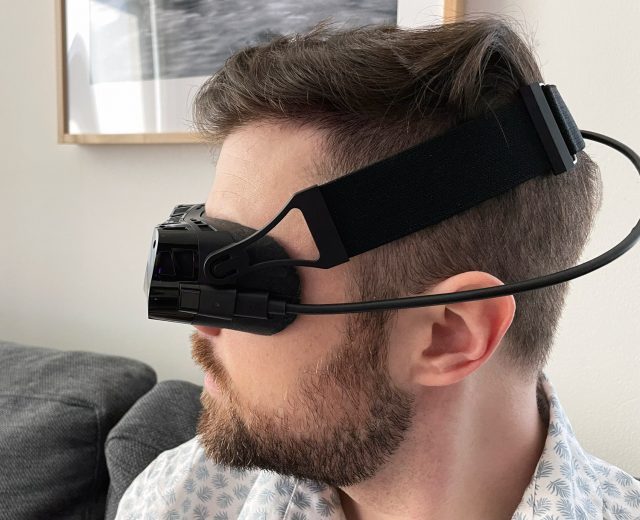
That means zero light leakage (which can be good for immersion, but problematic for the reasons described above). The headset is also dialed in—at the hardware level—for your specific IPD, based on your face scan.
Eyebox is Everything
If there’s one thing you should take away from this review it’s that Bigscreen Beyond has very good visuals and is uniquely conformable, but getting your eyes in exactly the correct position is critical for a good experience.
The eyebox (the optimal optical position relative to the lenses) is so tight that even small deviations can amplify artifacts and reduce the field-of-view. In any other headset it would be far too small to make the headset even a viable product, but Beyond’s commitment to custom-fit facepads makes it possible because they have relatively precise control over where the customer’s pupil will sit.
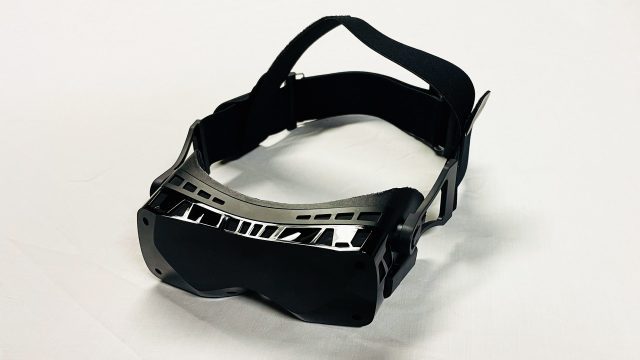 The first facepad the company sent me fit my face well, but the headset’s sweet spot (the clarity across lens) felt so tight that it made the already somewhat small field-of-view feel even smaller—too small for my taste. But by testing the headset without any facepad, I could tell that having my eyes closer would give me a notably better visual experience.
The first facepad the company sent me fit my face well, but the headset’s sweet spot (the clarity across lens) felt so tight that it made the already somewhat small field-of-view feel even smaller—too small for my taste. But by testing the headset without any facepad, I could tell that having my eyes closer would give me a notably better visual experience.
When I reached out to the company about this, they sent back a newly made facepad, this time with and even tighter eye-relief. This was the key to opening up the headset’s field-of-view, sweet spot, and improving some other artifacts just enough to the point that it didn’t feel too much of a sacrifice next other headsets.
Here’s a look at my field-of-view measurements for Bigscreen Beyond (with the optimal facepad), next to some other PC VR headsets. While the field-of-view only increased slightly from the first facepad to the second, the improvement in the sweet spot was significant.
Personal Measurements – 64mm IPD
(minimum-comfortable eye-relief, no glasses, measured with TestHMD 1.2)
| Bigscreen Beyond | Varjo Aero | Vive Pro 2 | Reverb G2 | Valve Index | |
| Horizontal FOV | 98° | 84° | 102° | 82° | 106° |
| Vertical FOV | 90° | 65° | 78° | 78° | 106° |
It’s sort of incredible that moving from the first facepad to the second made such an improvement. At most, the difference in my pupil position between the two facepad was likely just a handful of milimeters. But the headset’s eye-box is just so tight that even small deviations will influence the visual experience.
Comfort & Visuals
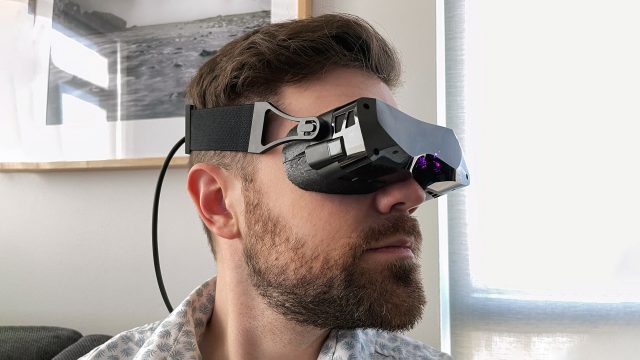
With the ideal facepad—and ignoring the annoyance of dealing with an off-board audio solution—Bigscreen beyond felt like I jumped a few years forward into the future of headsets. It’s tiny, fits my face perfectly, the OLED displays offer true blacks, and the resolution is incredibly sharp with zero evidence of any screen-door-effect (unlit space between pixels).
While it does feel like you give up some field-of-view compared to other headsets, and there’s notable glare, the compact form-factor and light weight really makes a big difference to wearability.
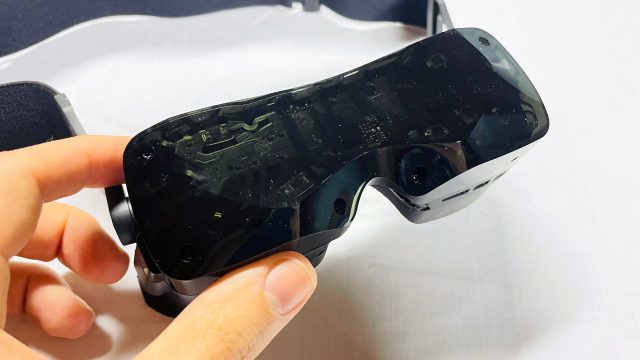 With most VR headsets today I find myself adjusting them slightly on my head every 10 or 15 minutes to relieve pressure points and stay comfortable over a longer period. With Beyond, I found myself making those adjustments far less often, or not at all in some sessions. When playing over longer periods you just don’t notice the headset nearly as much as others, and you’re even less likely to have the occasional bonk on the headset from your flailing controllers, thanks to its much smaller footprint.
With most VR headsets today I find myself adjusting them slightly on my head every 10 or 15 minutes to relieve pressure points and stay comfortable over a longer period. With Beyond, I found myself making those adjustments far less often, or not at all in some sessions. When playing over longer periods you just don’t notice the headset nearly as much as others, and you’re even less likely to have the occasional bonk on the headset from your flailing controllers, thanks to its much smaller footprint.
Brightness vs. Persistence
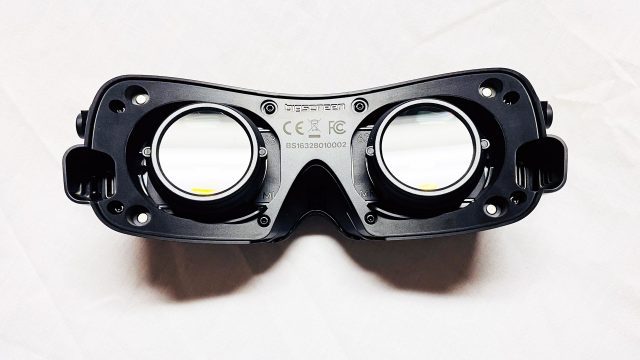 While Beyond’s resolution is very good—with resolving power that I found about equal to Varjo’s Aero headset—the default brightness level (100) leads to more persistence blur than I personally think is reasonable. Fortunately Bigscreen makes available a simple utility that lets you turn down brightness in favor of lower persistence blur.
While Beyond’s resolution is very good—with resolving power that I found about equal to Varjo’s Aero headset—the default brightness level (100) leads to more persistence blur than I personally think is reasonable. Fortunately Bigscreen makes available a simple utility that lets you turn down brightness in favor of lower persistence blur.
I found that dialing it down to 50 was roughly the optimal balance between brightness and persistence for my taste. This level keeps the image sharp during head movement, but leaves dark scenes truly dark. Granted you can adjust the brightness on the fly if you really want.
Of course this will be content dependent, and Bigscreen is ostensibly tuning the headset with an eye toward movie viewing (considering their VR app is all about movie watching), where persistence blur wouldn’t be quite as bad because you move your head considerably less while watching a movie vs. playing a VR game.
Clarity
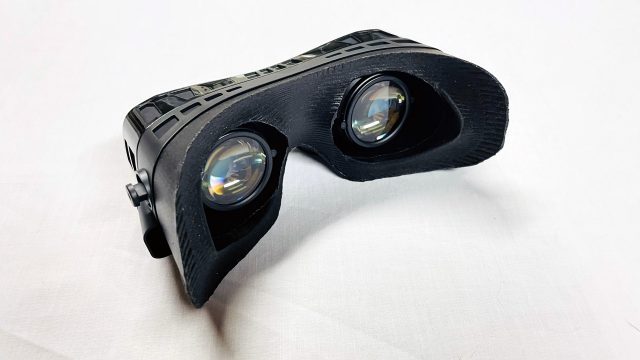 While Beyond doesn’t have Fresnel lenses, its pancake optics still end up with a lot of glare in high contrast scenes. I’d say it’s not quite as bad as what you get with most Fresnel optics, but it’s still quite notable. While Fresnel lenses tend to create ‘god rays’ which emanate from specific objects in the scene, Beyond’s pancake optics create glare that’s appears less directly attached to what’s in the scene.
While Beyond doesn’t have Fresnel lenses, its pancake optics still end up with a lot of glare in high contrast scenes. I’d say it’s not quite as bad as what you get with most Fresnel optics, but it’s still quite notable. While Fresnel lenses tend to create ‘god rays’ which emanate from specific objects in the scene, Beyond’s pancake optics create glare that’s appears less directly attached to what’s in the scene.
Beyond the issues noted so far, other visual factors are all top notch: no pupil swim, geometric distortion, or chromatic aberration (again, this is all highly dependent on how well your facepad fits, so if you see much of the above, you might want to look into the fit of the headset).
